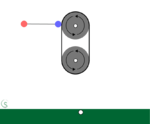Carolina Golfer
Well-known member
- Joined
- May 11, 2017
- Messages
- 2,598
- Reaction score
- 1,314
- Handicap
- 36
I'm not sure who shared this advice (I normally save the good ones and refer back to it)
On backswing you roll the club inside
lead arm separates from body
arms overswing.
Downswing, you throw the club and stand up with no body rotation to square the face.
Pretty much every amateur has similar faults.
This one seems very important: Downswing, you throw the club and stand up with no body rotation to square the face. Today, I practiced squaring the club face with a body rotation and it worked out well. Thoughts?
On backswing you roll the club inside
lead arm separates from body
arms overswing.
Downswing, you throw the club and stand up with no body rotation to square the face.
Pretty much every amateur has similar faults.
This one seems very important: Downswing, you throw the club and stand up with no body rotation to square the face. Today, I practiced squaring the club face with a body rotation and it worked out well. Thoughts?








